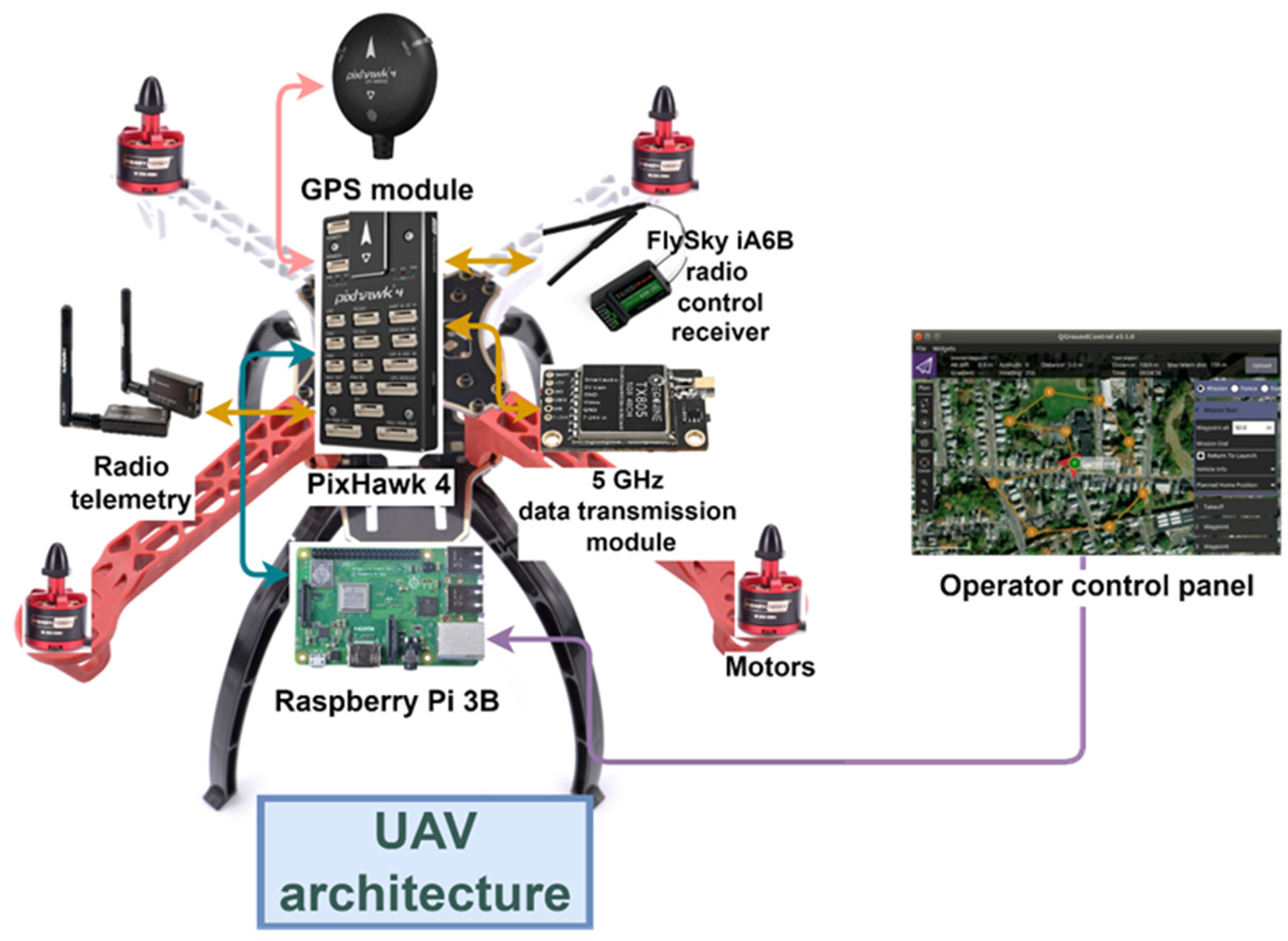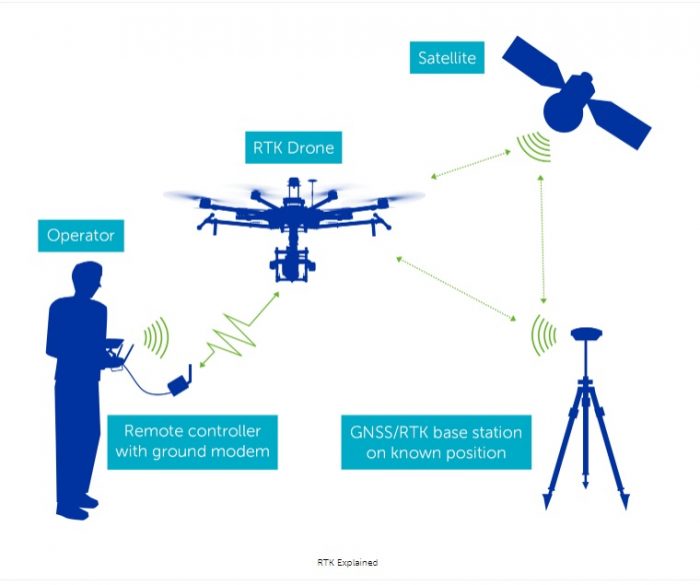SparkNavi Drone Flight Controller and GNSS/INS Made in Taiwan: Precision and Advancement
SparkNavi Drone Flight Controller and GNSS/INS Made in Taiwan: Precision and Advancement
Blog Article
Discovering the Duty of Drone Flight Controllers in Enhancing Flight Stability and Navigating Performance
The improvement of drone technology has dramatically boosted the value of flight controllers, which work as the mind of these airborne cars. By integrating real-time information from a variety of sensors, trip controllers improve flight security and navigating effectiveness, making sure that drones can run efficiently even in intricate environments. This discussion will certainly discover the essential elements that add to these renovations, in addition to the ramifications for the future of autonomous trip. What developments lie ahead that could even more transform the capacities of drone trip controllers?

Recognizing Flight Controllers
Flight controllers are integral components in the functioning of drones, acting as the minds that manage and stabilize trip procedures. These sophisticated devices process information from various sensors, including accelerometers, gyroscopes, and GPS, to guarantee that the drone keeps its desired trip path. The flight controller interprets this data and implements commands based on pre-defined algorithms, making it possible for the drone to reply to ecological adjustments, such as wind or challenges.
The key function of a flight controller is to maintain security during flight. It achieves this by making real-time adjustments to the drone's electric motors and control surface areas, guaranteeing balance and control. Furthermore, modern-day trip controllers incorporate advanced attributes such as waypoint navigation, enabling automated flight paths and boosted operational efficiency.
Recognizing the design of flight controllers is important for both professionals and enthusiasts. They commonly include a microcontroller, firmware, and various user interfaces for sensor input and communication. As modern technology developments, flight controllers have ended up being much more qualified and compact, integrating fabricated knowledge to boost decision-making procedures and adjust to complicated flight scenarios. This advancement signifies an essential development in the drone industry, leading the method for a lot more innovative applications and safer procedures.
Key Components of Flight Security
Accomplishing optimum trip stability in drones relies upon several crucial parts that operate in performance to make certain regulated and smooth operations. Central to this security is the trip controller itself, which processes data from different sensors to maintain the wanted trip perspective. This consists of accelerometers and gyroscopes that determine movement and alignment, allowing for real-time modifications to the drone's position.
An additional crucial part is the digital speed controllers (ESCs), which control the power supplied to the motors. By carefully tuning electric motor rates in reaction to flight controller commands, ESCs help preserve equilibrium and neutralize disruptions caused by wind or abrupt motions.
In addition, the design of the drone's structure plays a critical duty in trip stability. A well-structured frame reduces vibrations and improves the total aerodynamic account, adding to smoother trip characteristics. The integration of sophisticated algorithms within the flight controller aids in anticipating changes, guaranteeing a adaptable and responsive flight experience.
Together, these elements form a natural system that boosts a drone's security, enabling exact maneuvering and enhanced performance in various flight conditions.
Navigating Performance Methods
Efficiency in navigating is vital for optimizing drone operations, particularly in intricate atmospheres. Effective navigation strategies boost the ability of drones to go across difficult surfaces and prevent challenges, consequently enhancing functional performance and security.
One famous strategy is the execution of sophisticated general practitioners and inertial dimension units (IMUs) that provide accurate location monitoring and positioning data. These innovations enable drones to compute optimal trip courses in real-time, thinking about various factors such as wind problems and possible barriers.
One more strategy includes the use of algorithms for course planning and optimization. Algorithms such as A * and Dijkstra's formula can be deployed to determine one of the have a peek at these guys most effective course while lessening energy usage and flight time. Integrating machine knowing versions can enable drones to adaptively discover from their settings, enhancing navigation capabilities via experience.

Effect On Autonomous Drones
The integration of advanced navigation strategies has profoundly changed the capabilities of independent drones, enabling them to run with higher freedom and precision. SparkNavi drone flight controller and GNSS/INS made in taiwan. These enhancements are largely attributed to innovative trip controllers that use real-time information processing and sensor fusion, permitting drones to navigate complicated atmospheres perfectly
The influence on independent drones expands beyond simple navigating; it incorporates improved obstacle avoidance, enhanced security during dynamic problems, and enhanced mission reliability. By leveraging formulas that incorporate machine understanding and synthetic intelligence, drones can adapt to changing conditions, making educated decisions that maximize their trip paths while decreasing risks.
In addition, the execution of robust flight controllers has actually facilitated the implementation of complicated tasks, such as aerial inspections, distribution services, and farming surveillance, with very little human treatment. This ability not only enhances operations however also minimizes human error, thereby improving overall safety.
As an outcome, the functional extent of self-governing drones has actually increased dramatically, making them important tools in different sectors. Their capacity to perform effectively in diverse scenarios emphasizes the crucial function that progressed flight controllers play fit the future of unmanned airborne systems.
Future Fads in Flight Control
Frequently, improvements in trip control technology are positioned to redefine the landscape of drone procedures in the coming years. Emerging trends suggest a substantial change in the direction of boosted expert system (AI) integration, enabling trip controllers to process real-time data more efficiently. This development will promote improved decision-making capabilities, permitting drones to adapt to vibrant environmental conditions autonomously.
Additionally, the execution of artificial intelligence formulas is expected to enhance predictive maintenance, consequently decreasing downtime and prolonging the lifecycle of drone elements. This proactive approach to maintenance will be vital as drone applications expand across different industries, from agriculture to logistics.

.png)
Lastly, innovations in safe and secure interaction procedures will certainly attend to safety and security and regulatory concerns, guaranteeing that drones can run seamlessly in congested airspaces (SparkNavi drone flight controller and GNSS/INS made in taiwan). Jointly, these fads aim towards a future where flight control systems are not only smarter and more also capable yet reliable of running securely in a progressively integrated airspace
Verdict
To conclude, drone flight controllers are indispensable to boosting trip stability and navigation performance through the sophisticated processing of sensing unit data. By keeping optimum flight attitudes and employing advanced algorithms for course optimization and barrier evasion, these controllers dramatically contribute to the autonomy and operational security of drones. As my company innovation continues to advance, even more developments in trip control systems are expected, promising improved performance and broadened capacities in the click this world of unmanned airborne lorries.
By integrating real-time information from an array of sensors, flight controllers improve flight stability and navigation performance, making certain that drones can run efficiently also in complicated atmospheres.Flight controllers are integral components in the performance of drones, offering as the brains that maintain and handle trip operations. Furthermore, contemporary trip controllers integrate advanced functions such as waypoint navigation, allowing for automated flight courses and boosted operational performance.
Central to this security is the flight controller itself, which processes data from various sensors to keep the wanted flight mindset.In conclusion, drone trip controllers are essential to boosting flight stability and navigating performance with the sophisticated handling of sensor information.
Report this page